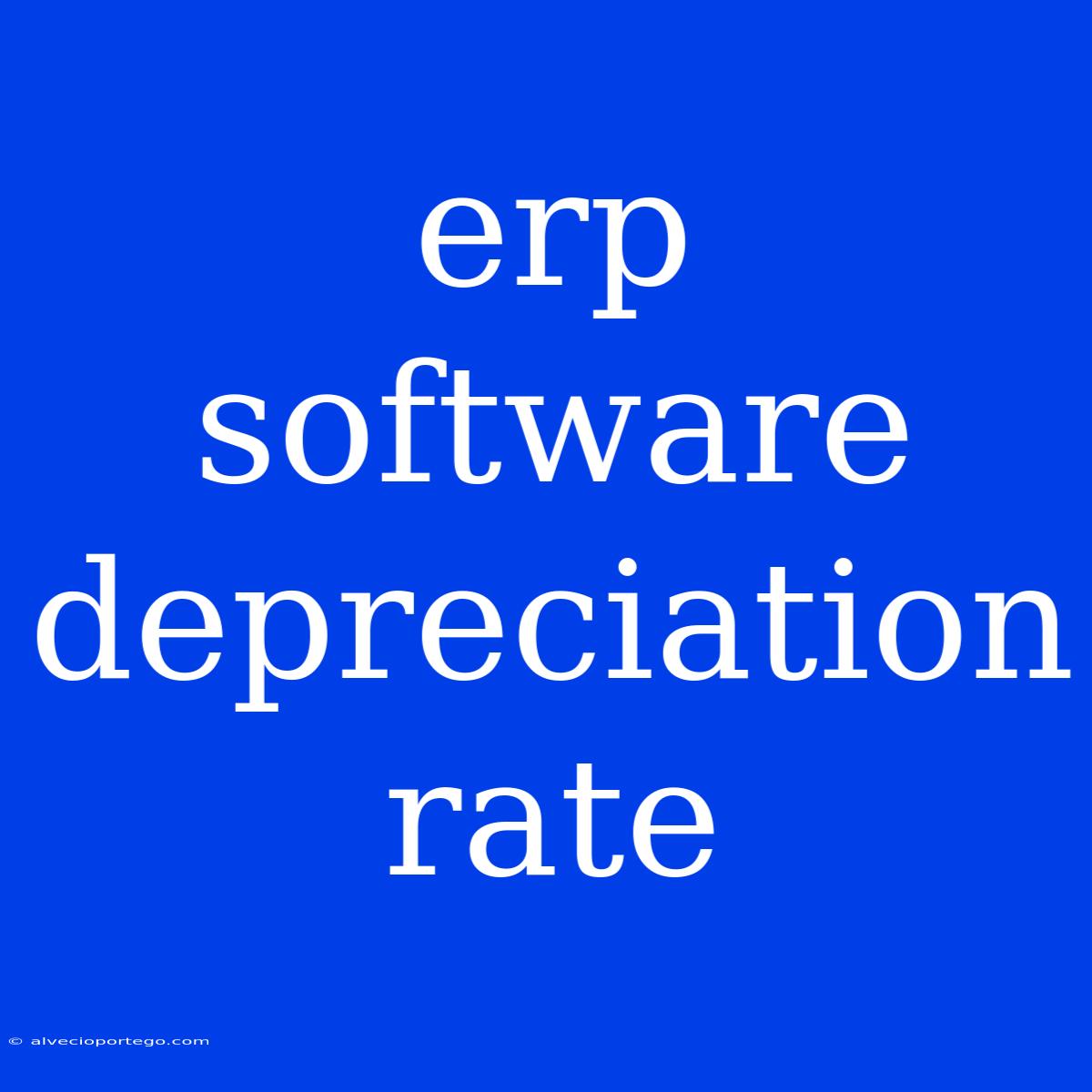Understanding ERP Software Depreciation Rates
Enterprise Resource Planning (ERP) software is a significant investment for any business. However, unlike tangible assets like machinery, the depreciation of ERP software isn't as straightforward.
What is Depreciation?
Depreciation is the systematic allocation of the cost of an asset over its useful life. This process reflects the gradual decline in value of an asset due to wear and tear, obsolescence, or market factors.
ERP Software Depreciation: The Challenges
- Intangible Asset: Unlike physical assets, ERP software is an intangible asset. Its value isn't easily measured and doesn't physically deteriorate.
- Rapid Technological Advancements: ERP software is constantly evolving. New versions with enhanced features and functionalities are released frequently, leading to obsolescence of older versions.
- Customization: Many businesses customize their ERP systems to meet specific needs. This customization makes it difficult to determine a standard depreciation rate.
Methods for Accounting for ERP Software Depreciation
While there is no single universally accepted method, several accounting practices are used for ERP software depreciation:
1. Straight-Line Method:
- Concept: The cost of the software is evenly distributed over its estimated useful life.
- Formula: (Cost of Software - Salvage Value) / Useful Life
- Example: A $100,000 ERP system with a 5-year useful life and a $10,000 salvage value would depreciate at $18,000 per year (($100,000 - $10,000) / 5).
2. Accelerated Depreciation:
- Concept: A larger portion of the cost is depreciated in the early years of the software's life. This reflects the faster rate of obsolescence in the initial years.
- Methods: Double Declining Balance, Sum-of-the-Years' Digits
- Example: Using the Double Declining Balance method, the depreciation rate is double the straight-line rate.
3. Unit of Production Method:
- Concept: Depreciation is based on the actual usage of the software. This method is appropriate for software used for a specific number of transactions or operations.
- Formula: (Cost of Software - Salvage Value) / Total Estimated Units of Production x Actual Units Produced
Factors Affecting Depreciation Rate:
- Software Version: Newer versions often depreciate faster due to rapid technological advancements.
- Customization: Highly customized software may have a shorter useful life than standard packages.
- Industry Practices: Some industries may have established guidelines for software depreciation.
Importance of Accounting for Depreciation:
- Financial Reporting: Accurate depreciation accounting provides a realistic picture of the software's value and its impact on profitability.
- Tax Implications: Depreciation impacts tax deductions and can lead to significant cost savings.
- Investment Decisions: Understanding depreciation helps businesses evaluate the cost-effectiveness of replacing or upgrading their ERP systems.
Conclusion:
ERP software depreciation is a complex issue. While there's no one-size-fits-all approach, businesses must carefully consider their specific circumstances to select an appropriate depreciation method. This will ensure accurate financial reporting, tax benefits, and informed investment decisions. Consulting with financial experts and accountants is crucial for determining the most suitable depreciation strategy for your organization.

